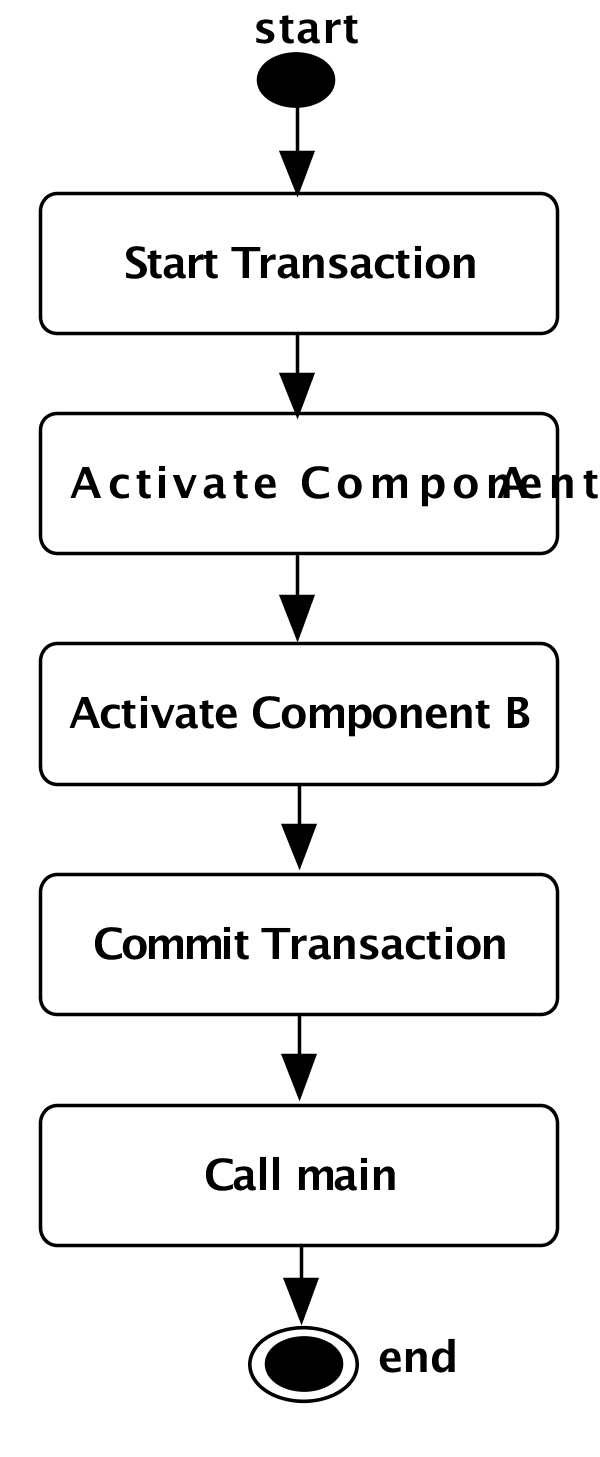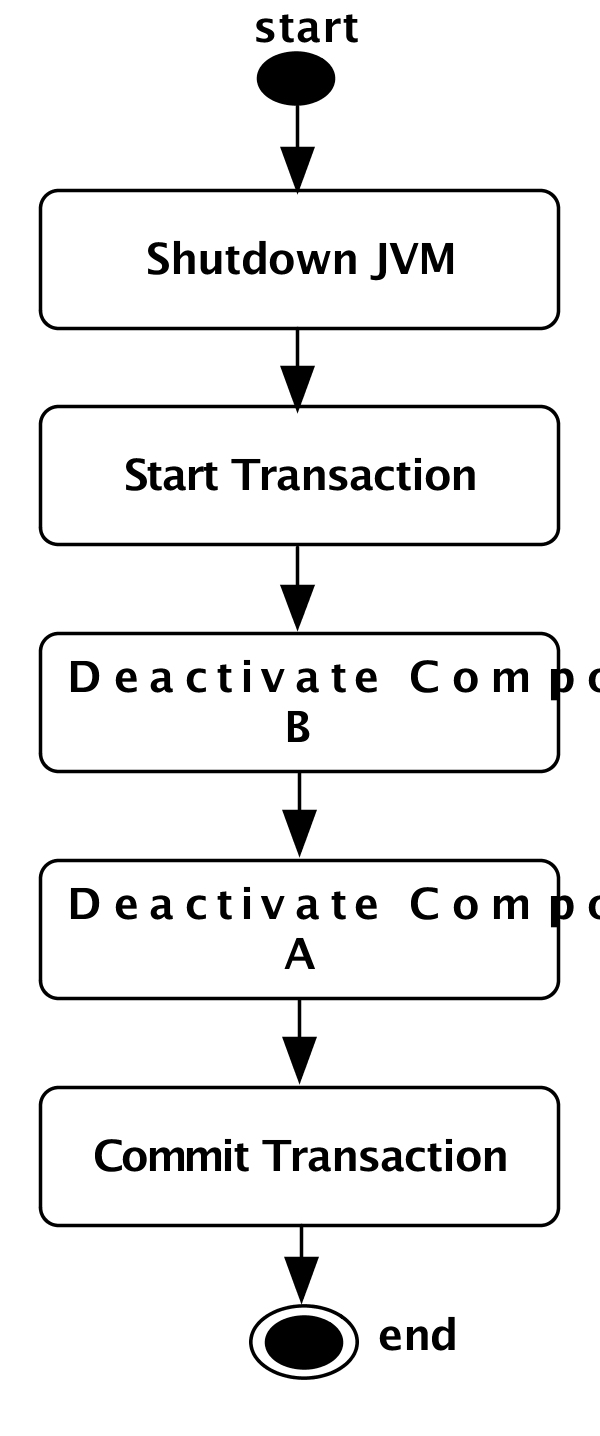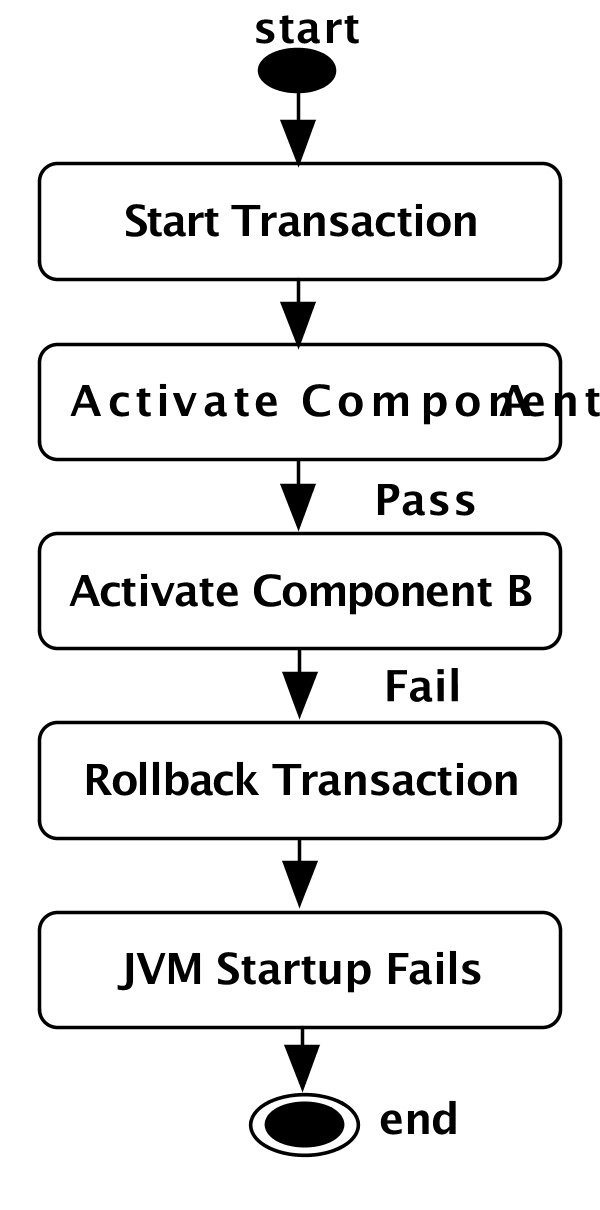A component is a JAR file that contains a property file named
ast.properties. Components may optionally
contain configuration files and notifiers. The configuration files and
notifiers are specified in the ast.properties file. The
order in which the configuration files are loaded and activated, and the
notifiers executed, is also specified in the
ast.properties file.
When an TIBCO BusinessEvents® Extreme
JVM starts, all
components are automatically activated in the order they are found in the
class path. All component activation completes before
main is called. The activation of all components occurs
in a single transaction.
When a JVM exits, all components are deactivated in the reverse order in which they were activated. All component deactivation occurs in a single transaction.
The failure of any component activation during JVM startup causes the transaction to be rolled back and the JVM startup to fail. The rollback of the transaction causes the deactivation and unloading of any configuration files loaded and activated by previously successful component activations.
During JVM shutdown, if a component attempts to contact a remote JVM on the same, or a different node, and the JVM is not available, the component deactivation transaction is rolled back and component deactivation is terminated. The JVM then shuts down. The result of this failure is that any components loaded by the JVM are not deactivated. The most common reason that a remote JVM is not available is that it is also being shutdown. To avoid this condition, it is recommended that component notifiers minimize the use of objects requiring access to an external JVM.


